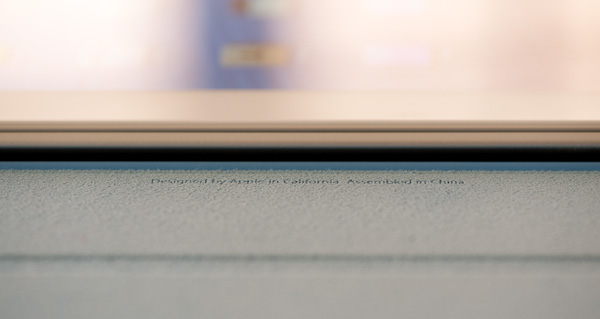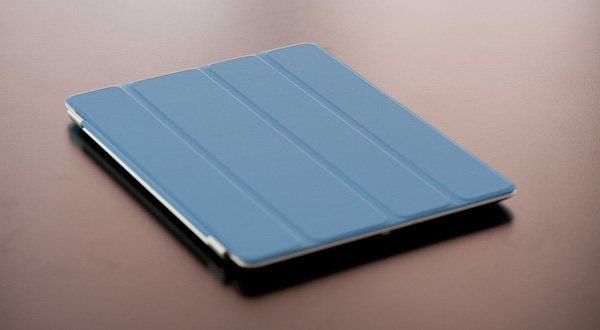iPad 4 (Late 2012) Review
by Anand Lal Shimpi on December 6, 2012 4:40 PM ESTFinal Words
The 4th generation iPad is a good evolution over the 3rd generation model. It doesn't fundamentally change the device or its function, it just makes it better. Battery life and performance are both improved over the iPad 3, and on the graphics side we finally have an SoC capable of driving good looking games at the iPad's native resolution. I don't know that there's substantial enough of a change to warrant an upgrade from the iPad 3 (unless you happen to be a game developer), but if you've been considering the iPad the 4th gen is a definite improvement over its predecessor.
If you're torn between the big and mini iPads, I've been recommending the mini for those who plan on traveling a lot with their tablet and the iPad 4 for those who will mostly use it at home. The exception to the travel stipulation is if you're a photographer and plan on using your tablet to show your portfolio/proofs/etc, in which case the color accuracy of the iPad 4 trumps the mini's portability.
It's interesting to me that the chassis and thermals haven't really changed since the iPad 3. Given the short cycle time between the 3rd and 4th generation iPads, I suspect there's not a whole lot of time to implement any major changes. I do almost wonder however if we won't see this chassis stick around for one more generation. I just don't know that there's room to shrink the design any further without substantial improvements in display efficiency.
Long term I do wonder what the future holds in store for the big iPad. The iPad is very similar in footprint to the 11-inch MacBook Air, and once the 11-inch MBA gets Haswell/Broadwell we may even see similar idle power battery life. The 13-inch MacBook Pro with Retina Display is pretty much the 13-inch rMBA that everyone wanted, I wonder if a future 9.7-inch iPad may be the same thing for the 11-inch MBA. Ultimately this brings convergence to mind, which itself leads to a lot of questions about form factor, OS and ISA. Apple has been quick to dismiss Microsoft's attempts to bring touch to notebooks, but there's a lot of history around Apple laughing at something only to bring forth its own take later on.
Taking a step back and looking at the market as a whole, there is competition the iPad has today that it didn't previously. Google's Nexus 10 surpasses the iPad 4 in pixel density, although it loses out in color accuracy. I can't stress enough that the competition really has to focus on calibrating its displays in addition to spending money on delivering a good panel. The Nexus 10 is priced more aggressively at $399 and ships with a faster CPU as well. The latter is interesting, especially given how recently Apple introduced its Swift CPU architecture. I wonder if we'll see Apple stick with the holiday launch schedule or move to a different release cadence once again, in order to continue to remain at the forefront of silicon technology.
When choosing between the iPad 4 and Nexus 10 decision boils down to, as is often the case, whether or not you feel more at home in Android or iOS. I've viewed the divide there as a line separating a computing device from an appliance. There's overlap in capabilities, but the overall experience tends to fall along those lines for me. You need to ask yourself what type of device you're more interested in when it comes to a tablet. I suspect Apple's success in the mainstream market with the iPad is due, in no small part, to just how appliance-like the iOS experience can be. It's not for everyone but I can see how it has resonated well among some audiences. Google's $100 price advantage isn't insignificant, and similar to our Nexus 7 vs. iPad mini recommendation, if what you want is a tablet and not necessarily a tablet that runs iOS, the Nexus 10 takes the cake.
Microsoft is now in the mix with Surface RT and Windows RT/8 tablets from its partners. These offerings are pursuing a slightly different user who wants convergence between a tablet and notebook. Conceptually I like the idea. I'd love to be able to only carry around a single device that serves as a wonderful tablet and productive notebook at the same time. I don't believe any of those devices are quite there yet, which makes tablet/notebook convergence still a fantasy for me.












113 Comments
View All Comments
vkn - Friday, December 7, 2012 - link
I for one appreciate these tests. There is no easy way to judge displays in showrooms. I now have a system of playing the the same hd videos on each device and evaluating subjectively (which sucks)darwinosx - Thursday, December 6, 2012 - link
You don't know anything. Apple has been doing this on displays for a very long time. Since you are obviously a teenager, probably longer than you have been alive.jabber - Friday, December 7, 2012 - link
Yes funny that.I saw this with NFC.
Before the finer points of the iPhone5 came out tech journos were all "NFC!!! NFC!!!! ITS THE FUTURE!!!"
Then the 5 came out with no NFC and it was overnight a switch to "Oh......NFC isn't really all that important! Whats NFC again?"
name99 - Sunday, December 9, 2012 - link
Really? Show us RESPECTED tech journalists who were, to use your language "all NFC! NFC! NFC!" about the iPhone5.I don't remember Gruber obsessing about this. I don't remember Anand saying this was an essential iPhone5 feature. I don't remember Horace Dediu caring about this.
Apple has made it quite clear, since they shipped the iPhone 4S, that they view BT4 as a better solution for most of the things that NFC is supposed to do. Given the extreme lack of interesting things being done with NFC, that seems like a good call.
Your claim is as ignorant as being surprised that the new iMacs shipped without an optical drives.
Death666Angel - Saturday, December 8, 2012 - link
Me personally, I don't agree with Anand. The eyes are pretty good at adapting to colors. So unless you have a calibrated PC monitor or something to compare to, you will not notice when colors are off, unless they are off by a big, big margin. I haven't seen a lot of that in the android camp and when it crept up, there were easy fixes by the community.cheinonen - Sunday, December 9, 2012 - link
Eyes are very adaptable to what is put in front of them, just like ears are with sound over time. That's why all the measures are done by instruments that aren't subject to the adaptability of our vision system. The dE numbers are designed to tell you how visible an error is. With the older 1976 and 1994 formulas, any dE below 3 was thought to be invisible in motion, with < 1 invisible when side-by-side. The dE2000 formula used in these charts is more accurate (in terms of weighing luminance, hue, and saturation errors), but smaller errors are more visible, so a dE of 3 is now worse than a dE of 3 in the old formulas. The dE numbers have a basis in vision science, though, and let you know if an error is visible.How well you'll notice, or care, about a color error likely depends on your exposure to correct colors. If you've spent years looking at a calibrated display, then you'll notice the errors almost instantly. If you've never seen one, you won't notice as you have no idea what it should look like. The whole point of calibration is just so when you see something, or design something, everyone else sees it the same way.
Also, a global fix for color errors isn't likely to work well, as all displays are slightly different and would need to be calibrated individually. You could make some adjustments, but not make them perfectly accurate.
name99 - Sunday, December 9, 2012 - link
To add to this point, I am not an obsessive about color. I don't do design work, or know Pantone numbers by heart or anything. But it was obvious enough to me that colors (in particular photos of faces in Contacts) looked different on my mac and my iPhone 1 that I submitted a bug to Apple about it.This is, to put it bluntly, the difference between Apple and other people. Other (supposedly technical) people see that a photo of a friend looks slightly different on their phone from their computer --- it's a little too dark or too red or whatever --- and they shrug and say "well, it's always been like that". Apple people say "Why the hell should we put up with this? It's possible to do better." It's this mindset that leads to useful improvements based on actual use cases, as opposed to useless improvements based on spec-boasting.
Focher - Saturday, December 8, 2012 - link
Not sure what the problem is. Everything is tested and reported. It's up to you to decide which attribute(s) matter to you.If anything, we should really appreciate that AnandTech reviews those attributes. In addition to Apple actually making the display quality a market differentiator for vendors who play in this space, AnandTech deserves credit for ensuring we see which manufacturers are delivering improved display attributes.
name99 - Sunday, December 9, 2012 - link
It's silly to claim that Apple has "just started" promoting color calibration.Color calibration was added to the original Mac OS in 1993 (ie WAY before OSX) and every year since then Apple has worked to move it a little pervasively into the system as CPU and GPU speed increases have allowed for more on the SW side, and as tighter control of manufacturing have allowed for more on the HW side.
sprockkets - Thursday, December 6, 2012 - link
Screw the ipad. We want the Nexus 10 review!